

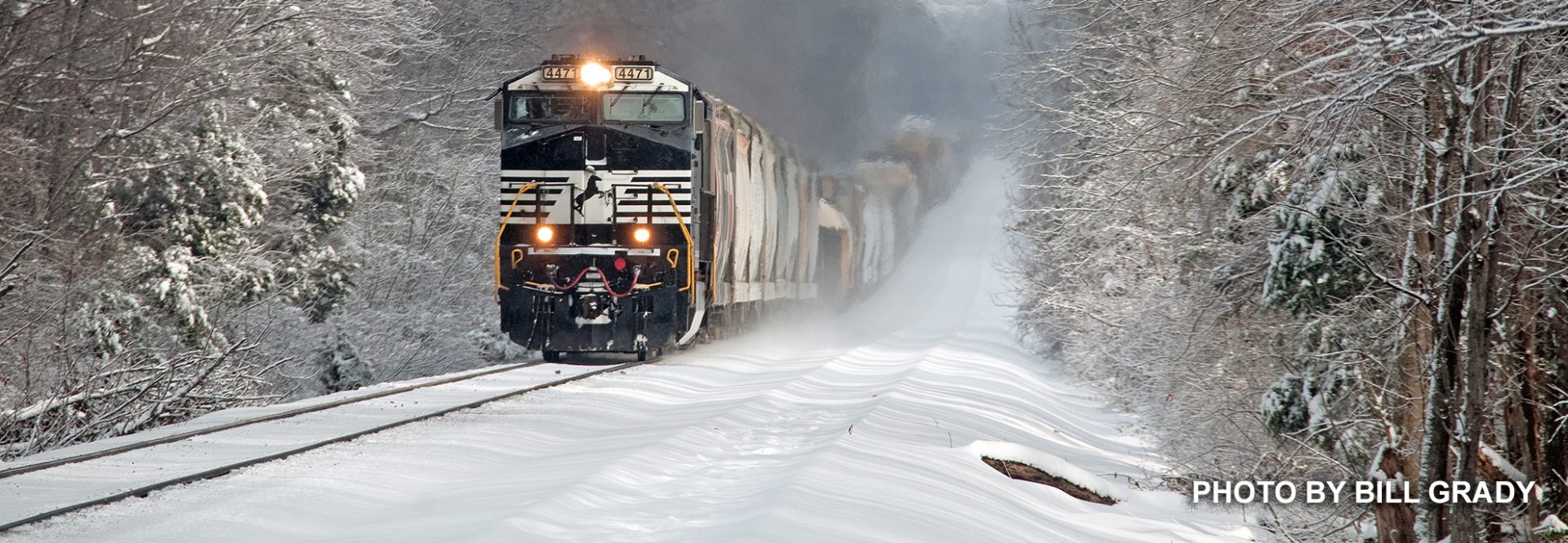
Photos from the Pennyrail Newsletter


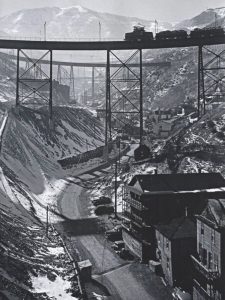 In 1942, the first full year of the U. S. involvement World War II, there were few sites as important to the war effort than a large copper mine in Bingham Canyon in Utah. The Office of War Information sent a young photographer named Andreas Feininger to document the mine pictorially and show how the ore was extracted. To be included was the role played by in-mine railroads.
In 1942, the first full year of the U. S. involvement World War II, there were few sites as important to the war effort than a large copper mine in Bingham Canyon in Utah. The Office of War Information sent a young photographer named Andreas Feininger to document the mine pictorially and show how the ore was extracted. To be included was the role played by in-mine railroads.
More than a hundred miles of rail line spiraled downward into the mine’s ever-widening amphitheater. More tracks connected the mine with other important sites such as waste dumps and a smelter and refinery several miles away.
During WW2, Bingham’s production spiked as miners strove to meet the war material needs. A single tank for example, required 800 pounds of copper, a large bomber a full ton. A battleship required 1,000 tons. Bingham produced one-third of all the copper used by the U. S. and its allies during the war.
Feininger stood on Bridge G and snapped our picture above. Having lived in Butte, Montana where the Anaconda Company’s Berkeley Pit continues to gobble up the town I found this picture fascinating. 1) How many more bridges crossing the canyon are behind the photographer? There are at least four visible up the canyon. Is Bridge A out of sight up the canyon, or way down and behind the lens? 2) The boarding houses in the foreground are classic. 3)The company houses up the draw are typical, very basic and minimal.
I don’t know about you, but I would get no sleep in the house directly under the closest bridge. Overloaded gondolas undoubtedly arrive at their destination, wherever and whatever, with a few less rocks in the hopper. 4) The snow covered walkway up the hill to the left is no doubt the route to the workplace. Looks like a long trek. 5) What a collection of vintage cars on the street.
The Berkeley Pit is a truck operation. They are BIG trucks, and today’s are probably triple the size of what I witnessed in 1969-73. A follow-up seems in order.
Submitted by Gary Ostlund.
Credits: Photo & story from the Summer 2014 Railroad Heritage published by the Center for Railroad Photography & Art.
What’s In A Number? 3985… 765… 611… while simple numbers have a different meaning to different people, for railfans a number can be magical. Although not living the fabulous life of some of her sisters in the realm of railroad history, former Canadian National 1395 is seen on October 8, 2017 at Coopersville, MI awaiting one of two fates… rust & scrapping, or perhaps restoration one of these days. The locomotive is part of the Coopersville & Marne Railway’s museum collection. Both photos by Chris Dees.
Go North Young Man – Great Lakes Central GP38-2 number 395 prepares to depart on the advertised with The Northern Arrow excursion train between Kalkaska and Petoskey, Michigan on October 8, 2017. Sister GP38-2 390 is on the other end to facilitate the return trip. Although rainy and overcast, passengers enjoyed the beautiful fall colors of the northern Lower Peninsula on the day long event. Photo by Chris Dees
Blazing New Trails – Marquette Rail GP38-2 2040 and sister 2044 get ready to depart Ludington, MI on October 8, 2017 with the Baldwin Blazer. Enroute, they will pick up cars from Manistee at Walhalla, MI before proceeding east. At Baldwin, it will meet with the Sparta-Baldwin road freight powered by SD40-2 3389. Marquette Rail is now a subsidiary of Genesee & Wyoming’s Orange Empire. Photo by Chris Dees
Below are the winning entries from our August 2017 Chapter Photo Contest from a field of nine entries. Our next and last contest of the year will run from November 1-31, 2017 with a Submission Deadline of December 7, 2017
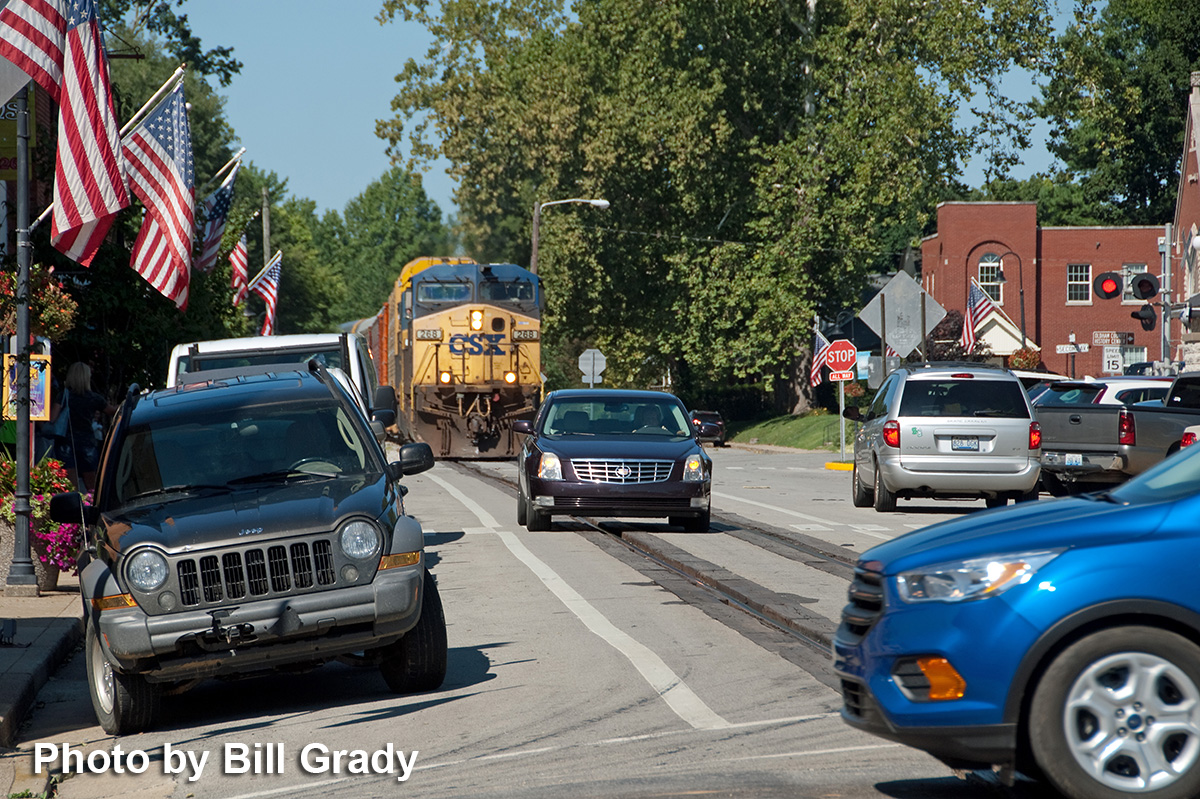
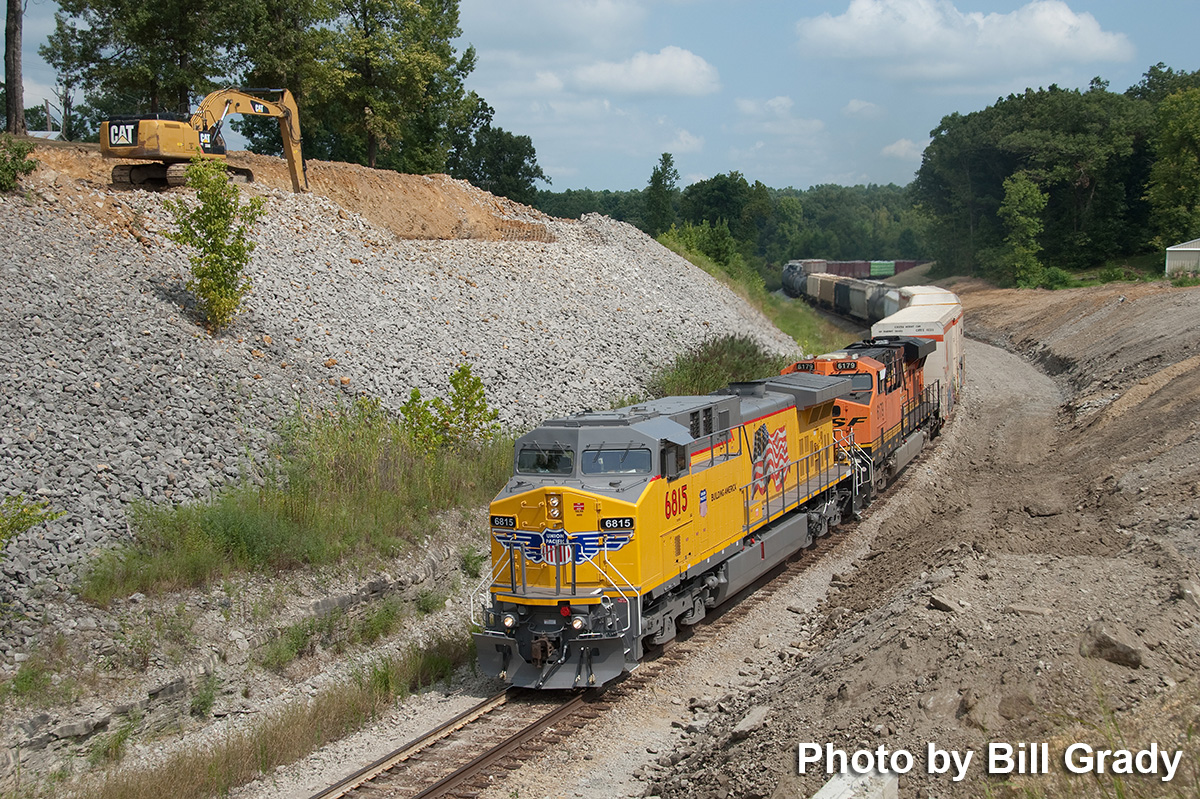
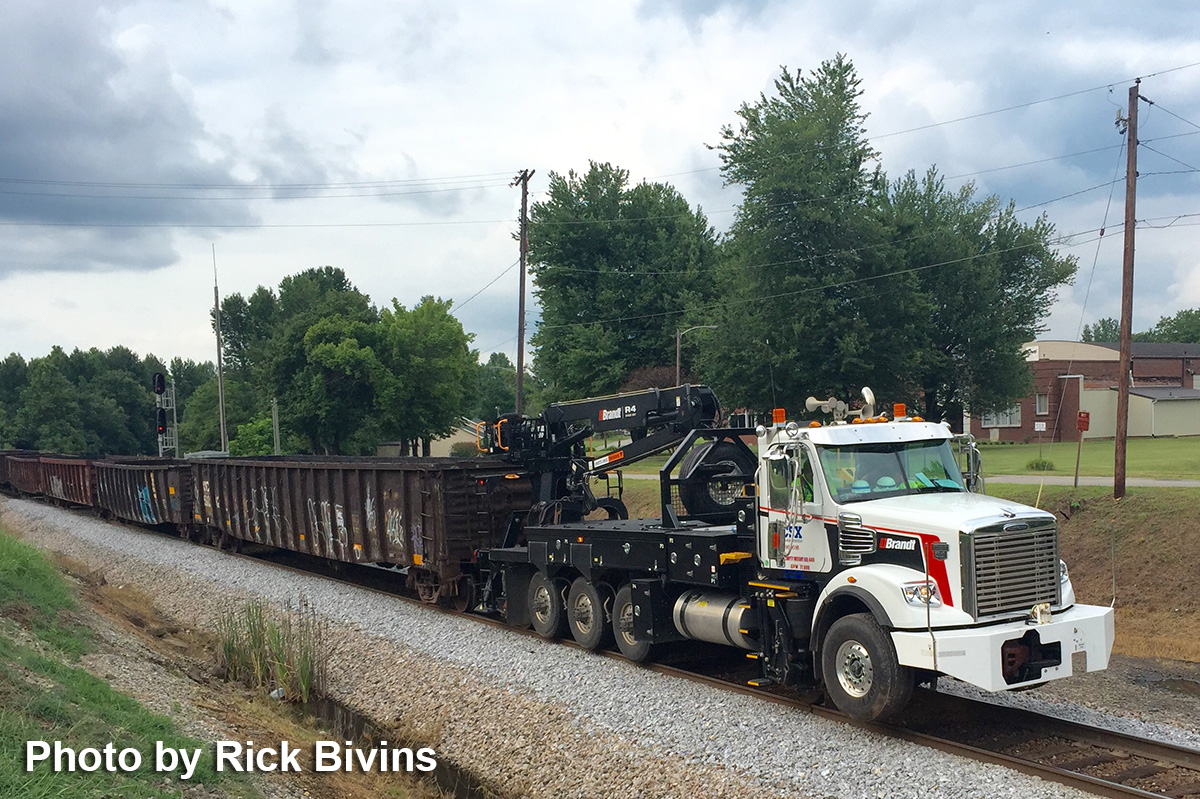
Not to be outdone by other Alco outposts in the Empire State, tourist railroad and shortline Arcade and Attica Railroad operates this ninety-seven year old Alco 2-8-0 on weekend excursions. Number 18 is the only regularly operating steam locomotive in the state of New York. Seen here during the mid-point layover at Curriers, New York, Photo by Chris Dees taken August 27, 2017.
American Locomotive Company will always be remembered as the birthplace of the Century line of locomotives. Thirty-two years after the last new locomotive rolled off the production line, Alco fans can still get their fix in The Empire State. Seen at Western New York & Pennsylvania Railroad’s shops in Olean, NY on August 27, 2017 are just a few examples: M636 number 643, C424 number 326, and RS3M number 406. Photos taken from public property by Chris Dees.
The draft from a hard-working steam locomotive, in this case Union Pacific 4-6-6-4 No. 3985, draws sand from a scoop into the firebox and through the flues. The practice cleans the tubes of soot. Draft is created by the exhaust steam, still expanding, being forced through a nozzle directed to the stack. The force of the draft draws smoke, heat and gasses through the flues. More than one fireman lost his scoop to the firebox in the days without mechanical stokers.
There’s a tale about the rookie fireman, on a lunch break, cooking a steak on a shovel, (not an completely unusual event.) A trickster engineer opened the throttle wide, whereupon, there went the sirloin.
The 3985 was built as a coal burner, converted to oil like sister 4-8-4 UP 844 when they were saved from the scrapper and placed in excursion and executive service. The 3985 and 844 pull an occasional railfan excursion to this day. They will be joined by Big-boy 4-8-8-4, No 4014 in the relatively near future.
Credits: Pix by David Hoge / pix & text (partial) as seen in TRAINS Magazine special edition Steam Today – 2008.